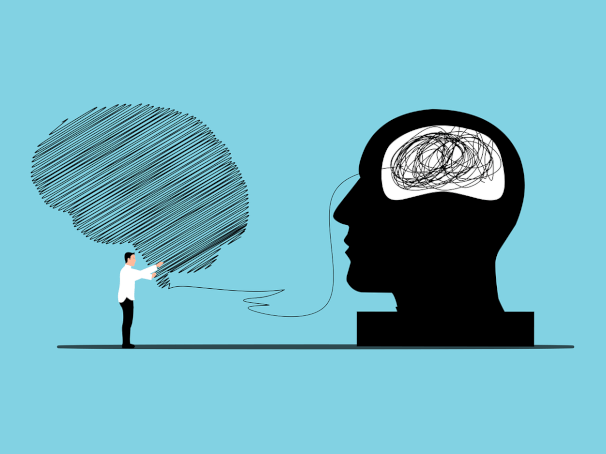
Many people experience shyness at some point throughout life. Unfortunately, some people are faced with something much more significant - social anxiety. Social anxiety is a serious mental health disorder that impacts one’s quality of life and overall wellbeing. Social anxiety can make it much harder to enjoy everyday activities, interact with others, and perform at work, school, etc.
What is the Difference Between Shyness and Social Anxiety Disorder?
As far as most psychologists are aware, there is no difference between shyness and social anxiety disorder beyond severity. Shyness can be distressing for those who experience it, especially when in public and/or interacting with others. Yet the distress associated with social anxiety disorder is far more severe. Social anxiety disorder is much more difficult to manage than shyness, and tends to permeate all facets of one’s life.
Social Anxiety Disorder Treatment Strategies
The course of treatment for social anxiety disorder may vary based on the individual’s unique experience of anxiety (how long SAD has affected the person, the severity of symptoms, the areas of life being impeded by anxiety, etc.). Nonetheless, there are some commonly used treatment approaches for those with social anxiety.
- Cognitive behavioral therapy or CBT is an effective tool for combating social anxiety disorder (SAD). However, for many it is simply too expensive, or not something they're ready to commit to right away.
Managing Social Anxiety Outside of Therapy
While seeking professional mental health treatment is ideal, there are some things that one can do on his or her own to help manage the difficult symptoms associated with SAD.
Mindfulness
Mindfulness, while not a professional intervention, is a practice that can significantly improve the symptoms of anxiety disorders. Mindfulness is the act of heightening one’s awareness to things both internally (i.e.- emotions, thoughts, physical responses, etc.) and externally. Awareness is usually the first step to making any sort of change; thus, becoming more aware of one’s anxiety is a crucial step to managing that anxiety.
Challenge Thought Processes
As awareness increases through the practice of mindfulness, it will become easier to identify the negative thoughts, which tend to go hand-in-hand with social anxiety. The more a person is able to identify (or label) which thoughts are negative/unhelpful, the more successful he or she can become at challenging those thoughts.
To challenge negative thoughts, one might as themselves questions such as:
- Is this thought absolutely true? What is the evidence?
- Is there the possibility this thought is not true? What is the evidence?
- Am I making an assumption/judgment?
- Am I predicting the future?
The technique of challenging thoughts is central to the cognitive-behavioral therapy frequently used with individuals with SAD.
You can try doing this in your head, or write it out in a journal so that you can see your thoughts on paper. For example:
- Thought: I made a joke and that person didn't laugh. They think I'm stupid.
- Why: I don't know why I think that. They didn't laugh. It's my anxiety taking.
- Alternatives: Maybe they didn't find it funny and don't think any differently of me. Maybe they didn't get the joke or heard it before. Maybe they didn't hear it or they're not the type of people that laugh out loud. Maybe they're shy too.
- Likely Outcome: It's unlikely the single joke has caused someone to change their opinion of me. At worst, they may not find me funny, but most likely it's related to the specific joke or their sense of humor.
- Importance: Even if they did think less of me because of the joke, I am not sure why I care. I don't even know this person and I'll probably never see them again. Their opinion of me doesn't matter. I am not sure why I am upset about it but their opinion of me doesn't reflect how I should feel about myself.
Desensitization to Fears
For some, social anxiety is centered on specific fears, such as fear of being judged or embarrassed. Some people also actually have a fear of the anxiety itself - worrying that your social phobia will prevent you from reaching out to others. If a specific fear can be identified, there are ways to approach and engage with the fear through slowly exposing oneself to it. This process can essentially “desensitize” an individual from the initial fear.
An example would be combatting your fear of embarrassment by purposely embarrassing yourself under your control until it no longer worries you. For example, you can walk outside in a clown costume and stand in a semi-public place for hours upon hours on end, not leaving until the embarrassment stops bothering you. You can also consider singing in a public place, or doing some type of silly dance.
Social Support
It can be hugely difficult for those with social anxiety disorder to make and/or maintain friendships. Yet, because the process of managing and working through social anxiety can be challenging, it is vital to have some sort of support system. Reaching out to the people (no matter how few) that do provide comfort can not only help support the person struggling with social anxiety, but in a way serve as “practice” in terms of interacting, building relationships, etc.
Studies have shown that those with strong social support are far more confident than their peers. While social anxiety disorder is not technically a confidence issue, building upon one’s confidence can greatly increase the chances of engaging in treatment, and facing fears.
Distractions
The word distraction is often associated with a negative connotation. But when it comes to managing social anxiety, distraction is actually quite valuable. Distractions tend to overwhelm the senses, making it much harder to be focused on the negative thoughts which contribute to the anxiety. Of course, distractions are only helpful if they are healthy for a person to engage in. Some positive distraction examples include:
- Sports/Exercise
- Time with Family or Friends
- Funny/Upbeat Shows, Podcasts
- Fun/Upbeat Music
- Hobbies
Overcoming Social Anxiety is a Process
There are no quick fix for social anxiety. Much of it involves slowly breaking down each individual fear, and challenging negative thoughts again and again. Essentially, it is like retraining the brain; and that can take time. With consistency and patience, social anxiety symptoms can be managed and have far less of an impact on one’s life.












